Childhood memories are among the best. And when you’re 94, they’re often brought out — to be cherished once again — by current events. For me, it was the announcement last fall that Amtrak was changing its dining service on long-distance trains, eliminating the traditional dining car on some overnight trips.
What a loss! What a pity! Woe is me!
I was five, then six, then seven, the summers I spent with my maternal grandparents at their cottage on Zukey Lake, a few miles outside Ann Arbor, Michigan. It happened that the tracks of the Michigan Central Railroad, the main line from Detroit to Chicago, ran just behind the knoll on which their cottage had been built. Late each afternoon, when my grandmother had dried me off and dressed me in my coveralls after an afternoon in the water, I’d hear the train whistle.
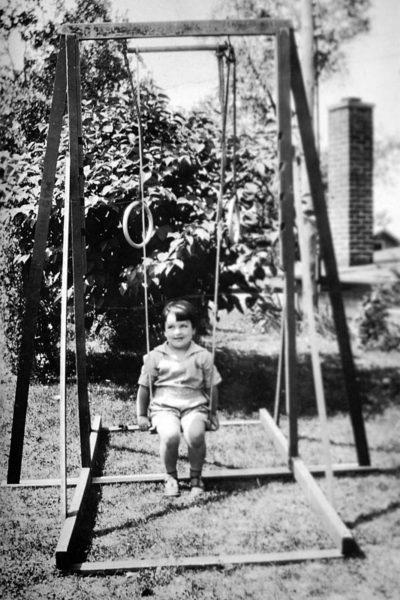
The railroad had a road crossing just a few houses before Grandma and Grandpa Mann’s cottage, so the train had to slow down and blow its whistle. So it was barely moving as it passed behind the cottage. I’d rush out back and, the cottage being on the knoll, I was at eye-level with the train when it passed. I’d wave to the engineers. The engineers would wave to me. And then I’d wait for the dining car to pass.
It was a wondrous thing.
It had wide windows so I could easily see inside: the people at the tables with white linen cloths, set with glass goblets, and bud vases, each with a red rose in it. The grown-ups — a wonder in themselves to a child my age — were laughing and chatting as they would if they were sitting around the square table in our cottage.
It made such an impression that one of the first things I did when I took the train to college was to head for the dining car. I lived in Michigan and went first to Chicago to get a train to St. Louis, where I would board passenger cars to Columbia, Missouri, and Stephens College. The train to St. Louis left Chicago in the morning and had a dining car (or cars) for lunch. I made my way there for the first seating.
It was as I had seen. Tables with white cloths and goblets for water glasses, the bud vase with the red rose to one side. I also found what I had surmised but not been able to see from the knoll — china plates and silverware (two forks to the left of the plate and two spoons to the right of the knife). And being a dining car or restaurant on wheels — a menu.
I don’t remember what I ordered, perhaps chopped sirloin, as I liked that, with whipped potatoes. Or maybe roast beef with the baked potato. Pork chops. Baked ham. Whatever, I enjoyed every bite, every moment in the dining car, as the train rolled along, the wheels clicking, the flat countryside of downstate Illinois a moving picture outside the big window.
I would go to the dining car on every trip to and from college, then later when traveling professionally. And have a lovely meal, not unlike the ones in nice restaurants, as the train rolled along, the wheels clicking, the countryside of Kansas or Pennsylvania, Arizona or New York, a moving picture outside the big window.
In actual movies, scenes in dining cars were almost a staple if the characters traveled. One of the most memorable was the one in Alfred Hitchcock’s classic North by Northwest with Cary Grant and Eva Marie Saint sparring across the damask as the train moved up the Hudson River just out of New York on their way to Chicago.
The dining car scene in North by Northwest (uploaded to YouTube by Movieclips)
A familiar part of overnight travel by then … but not always.
In the beginning, travelers on long trips had to find nourishment at roadhouses near the train’s water stops. The food was so bad it reportedly discouraged travel. But most railroads had begun offering dining facilities even before the Transcontinental Railroad was completed May 10, 1860.
By the mid-1880s dining cars had become a normal part of long-distance travel, although the Santa Fe Railway had coordinated its stops with Fred Harvey and his Harvey House restaurants — see the 1946 movie The Harvey Girls about the Harvey House waitresses, Judy Garland being one — so travelers had only to step off the train and into the restaurant to dine comfortably.
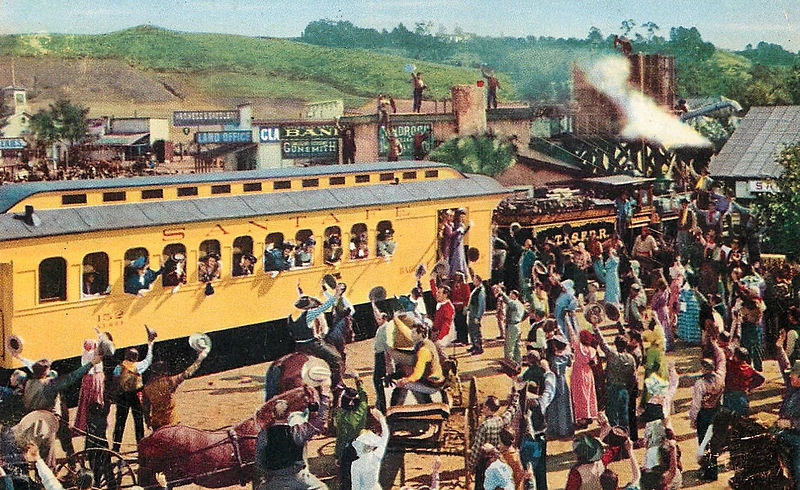
No Harvey Houses or roadhouses by the train’s water stops with bad food for me when I went to Los Angeles. I traveled on the famed Chief and Super Chief, with two-and-a-half days each way for trips to the dining car, with the tables for four, linen table cloths, goblets, silver, and the bud vase. Whether or not the food rose to the gourmet level of some trains, notably the famed Orient Express, may be more a matter of my taste buds then than the dishes. Or, perhaps, I was so entranced still with dining cars — childhood memories being what they are — that I thought it was fine.
It should be understood, too, that in the ’40s, train travel was still the main form of transportation in this country. Yes, there were planes, but commercial flights did not take off — no pun intended — until the ’50s. People went from one place to another, particularly long distances, by train.
When I first started working at the Chicago Daily News in 1944, a standard part of reporting was the “train meet.” Railroads sent out notices of celebrities traveling to Chicago, and a reporter and photographer would meet the train for a photo and picture. All passenger trains stopped in Chicago. Stopped. Not just for passengers to board or depart, but for a designated number of hours.
The cars of the popular passenger trains would be moved to other popular trains — think cars from the Chief and Super Chief that brought celebrities from Hollywood and the 20th Century Limited took them on to New York. The stars coming to town on the Chief or Super Chief would stop over in Chicago for a few hours, usually have lunch at the Ambassador East’s famed Pump Room or meet with press — and then return to their drawing rooms in cars now hooked up to the 20th Century Limited. And vice versa.
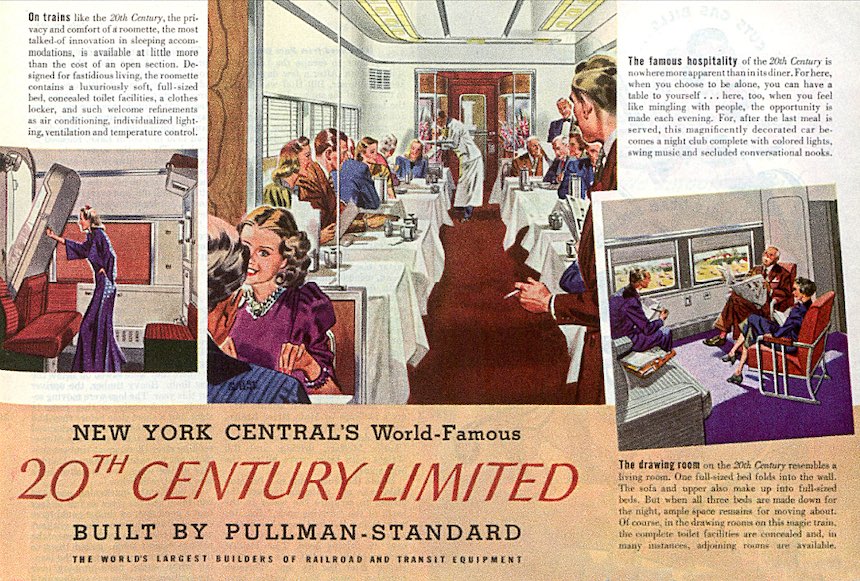
Although I traveled on the Chief and then Super Chief on that trip to (and from) Hollywood — heading for the dining car at the first opportunity — I don’t remember any stars there at any of the meals. I do remember seeing the famed classic pianist Arthur Rubinstein in the dining car when I was having dinner en route to Champaign-Urbana for the Illinois State Basketball Tournament one year.
I also remember all too well my visit to the dining car on my last trip back to college. I’d attended my roommate’s wedding in Virginia and was traveling with her sister, a fellow Stephens student. We had to go through Washington, and in the nation’s capital we used our brief layover to go to the nearby Statler Hotel’s lounge area. Although we were not of age, we were dressed up enough to pass for adults, apparently, and we ordered champagne cocktails. (Very Bette Davis.) One each but cherished to this day.
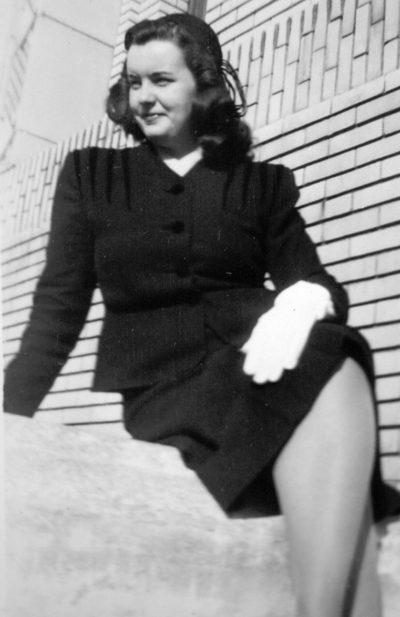
A short way out of Washington that night, it was January and the windows were black except for occasional car lights or buildings we passed, we took our seats in the dining car. Two classmates opposite us at the table with its linen cloth, goblets, silverware, and bud vase with a red rose. After scanning the menu, I said to my roommate’s sister, pause in the wrong place:
“Let’s get fried … chicken!”
Two years later, when I was returning to Chicago from a visit with my grandparents in Ann Arbor, the windows were also black except for occasional car lights or buildings we passed. The trip had come up suddenly when I, then writing a column for the Chicago Daily News, chanced to mention at a social event that I had family in Ann Arbor. The man I was talking to owned the Detroit Lions football team, and his wife said they’d be flying up to Detroit that Friday morning for the game Sunday, and invited me to fly with them.
I accepted the invitation and flew to Detroit on their private plane (way to go!) and spent the weekend with Grandma and Grandpa Mann. Late Sunday afternoon they drove me down to the railroad station to board the train that still ran between Detroit and Chicago.
And it came to pass that I was in the dining car, seated at one of the tables with the white linen cloth and bud vase with the rose, when the train slowed and I heard the whistle blow.
Featured image: Detail from an advertisement for the New York Central, October 25, 1947
Become a Saturday Evening Post member and enjoy unlimited access. Subscribe now
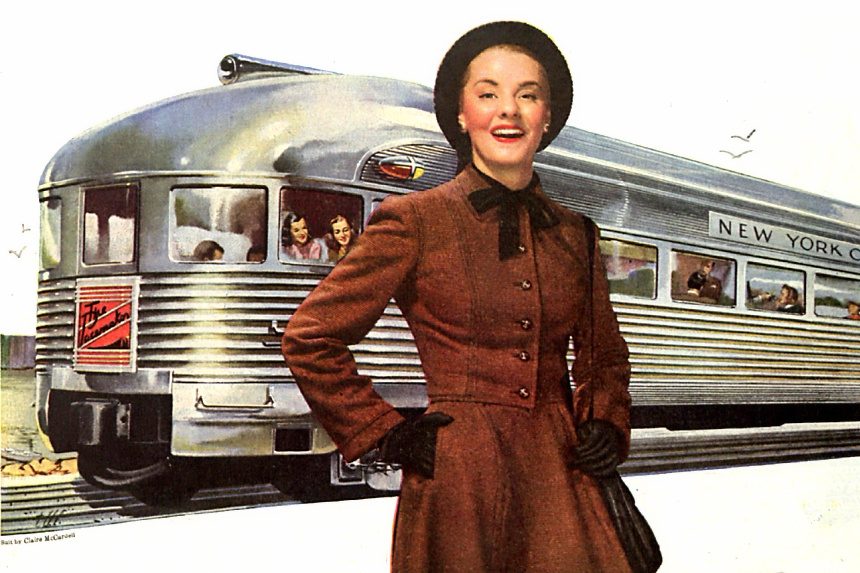



Comments
although it was many years after val first began riding trains, amtrak’s lake shore limited (new york – chicago) had,
in the 1970’s, an “old-time” dining car. i attended the university of michigan at the time and regularly
took “the lakeshore” from ohio to my home in new york city. this involved driving to toledo from ann arbor (rather than to the detroit airport) and then riding overnight to manhattan. dinner (last call out of toledo!) and then breakfast – in both directions – was reason enough to chose the train. don’t believe me? several years later,
a number of my college friends had moved to new york. somewhere around then, business took me back to ohio,
and i decided to ride “the lakeshore”. as i walked to my sleeper on track 18 in grand central terminal, i looked in
the diner windows and noticed a group of my pals seated and waiting to have dinner with me. they bought tickets to rhinecliff – the first stop for passengers on the way to chicago – and then took the last train back to the city, just
to have the prime rib. it was THAT good!!
My father, Carl Peterson, was a locomotive engineer for the New York Central. For the last few years of hi career he was the engineer for the 20th Century Limited on the Mohawk Division between Albany and Syracuse. That time represented the pinnacle of his career spanning over 40 years.
This feature would be a wonderful read anytime, but admittedly much more now as we get deeper-by-the-day into this unprecedented science-fiction nightmare, Val.
I love reading about your childhood (and lifelong) love affair with the Golden Age of American train travel. The linens, table cloths, goblets, silver, bud vases. The whole experience.
I can even picture and smell the wonderful food from your descriptions as well.
Being a longtime fan of vintage general-interest magazines from before my time, I’m familiar with the beautiful, illustrated ads for mid-century train and airline travel.
This was an era when people were well-behaved and had class. Men wearing gym clothes and baseball caps ass backwards, women wearing yoga pants, tank tops, flip flops or worse??Never. Not even in the ‘80s. No class, no way, anymore.
Thanks for including the beautiful photo of yourself in 1946, and that clip from ‘North By Northwest’. Even the color in films back then was so much richer and sophisticated, like the stars themselves. Everything all looks alike, but you know that.
Stay well during these dreadful times, and keep your life stories coming to today’s wonderful Post!